How to Fix 1Password Chrome Extension Not Working
The 1Password Chrome extension stops working when the icon becomes unresponsive, autofill fails, or it keeps asking for the master password despite the app being unlocked. This behavior signals a failed connection between the extension and the desktop app, typically due to disabled integration or blocked communication channels.
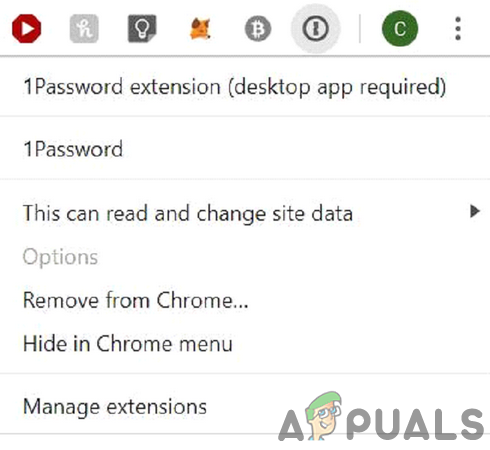
The most consistent cause is the “Integrate with 1Password app” option being turned off in either the app or extension settings. Other reasons include corrupted extension files, Chrome updates, or native messaging being blocked by security tools
1. Restart Chrome
Before proceeding with the solutions, restart the Chrome browser after ensuring that no Chrome or 1Password processes are running in your system’s Task Manager. This simple action can resolve temporary glitches. Additionally, restart your computer after completely exiting the 1Password application. Ensure that your license or subscription is currently valid. Also, verify that your antivirus or firewall is not interfering with the 1Password extension. If available, try to enable the Native Messaging Protocol via Help < Advanced in 1Password, as this can resolve integration issues.
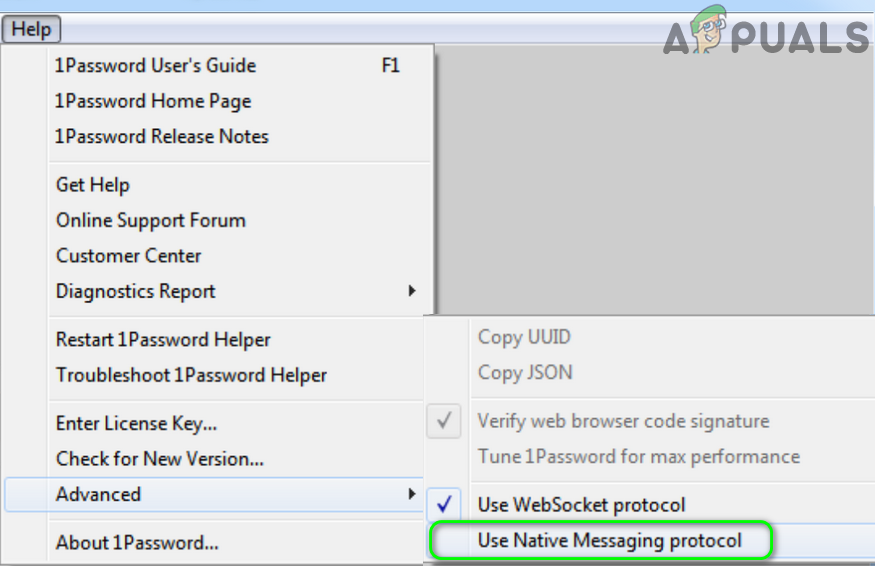
2. Update the 1Password Extension/Application to the Latest Version
Frequent updates to the 1Password extension and application introduce new features, enhance compatibility, and address known bugs. If you are running an outdated version, compatibility problems can arise. In this scenario, updating both the 1Password extension and application should resolve the issue.
- Open the Chrome browser and click the Extensions icon.
- In the menu, select Manage Extensions.
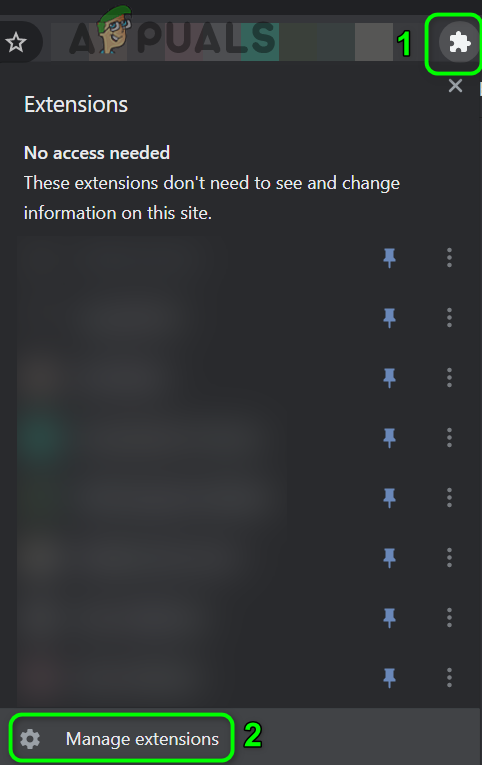
Open Manage Extensions in Chrome - Enable Developer Mode at the top right, then click the Update button to refresh all extensions.
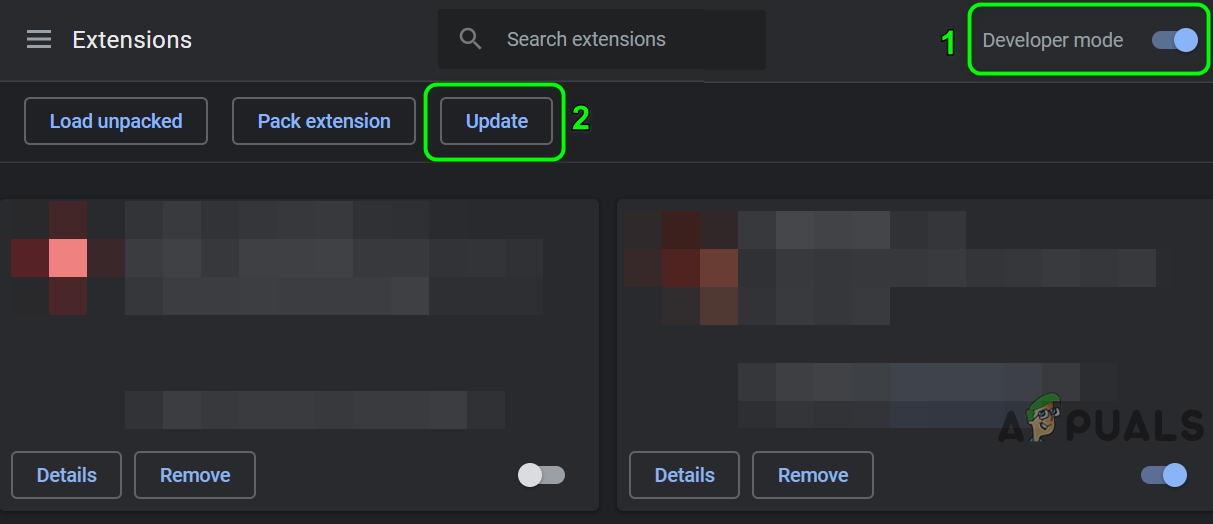
Update Chrome Extensions - Ensure that your 1Password application is also updated to the latest version. This update is usually automatic but check manually if needed.
- After updating, test whether the 1Password extension is now functioning correctly.
3. Update the Chrome Browser to the Latest Version
Chrome is regularly updated to improve security, performance, and extension compatibility. An outdated browser can lead to extension failures due to mismatched versions. Keeping Chrome current can prevent compatibility issues with 1Password.
- Open Chrome and access the menu by clicking the three vertical dots at the top right.
- Go to Settings, then select About Chrome from the left menu.
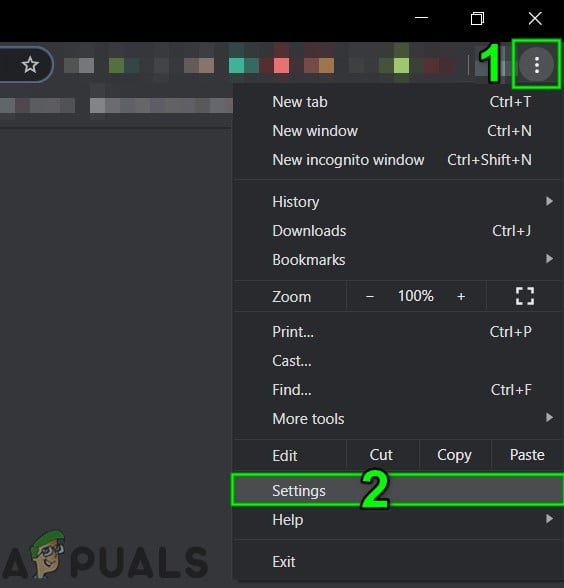
Open Chrome Settings - Allow Chrome to check for updates and install any available. Click Relaunch when prompted to apply the update.
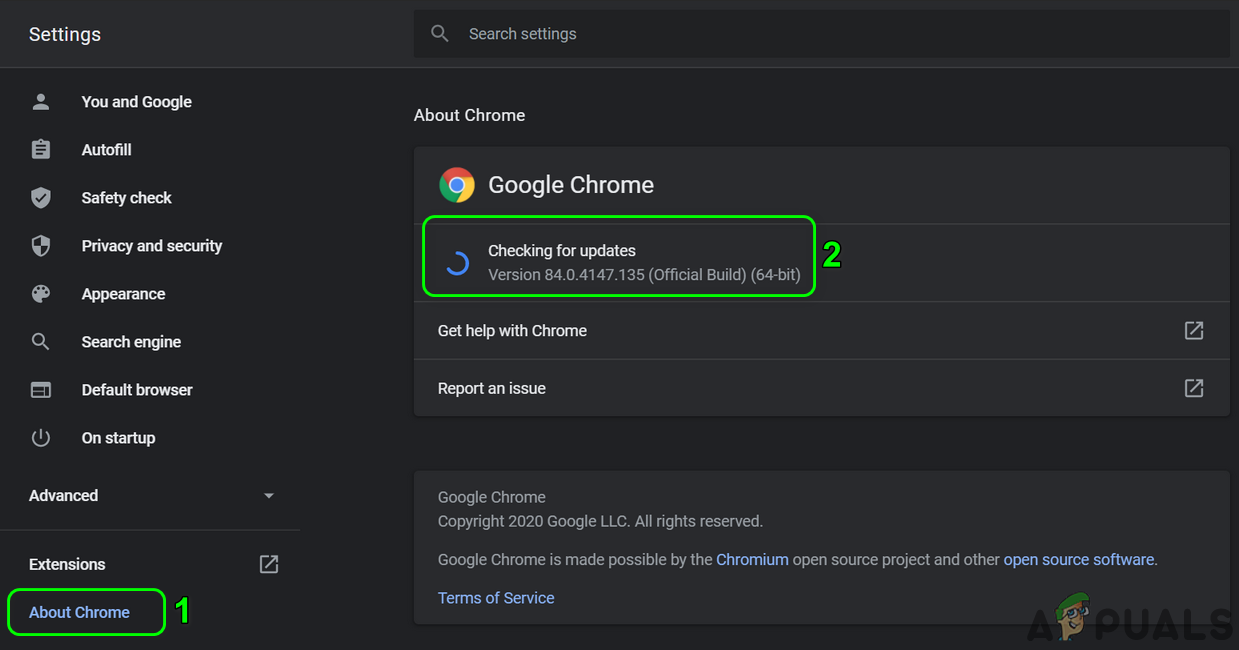
Update Chrome - After relaunching, confirm if the 1Password extension is working as expected.
4. Use Only One Version of 1Password Applications or Extensions
Running multiple versions of 1Password—such as 1Password X and the traditional extension—or having both the web and desktop versions installed can cause conflicts. Keeping only one version installed enhances stability and compatibility.
- In Chrome, click the Extensions icon.
- Select Manage Extensions.
- Check if you have more than one 1Password extension (e.g., ‘1Password – Desktop App Required’ and ‘1Password X’). Disable or remove all except one, then test functionality.
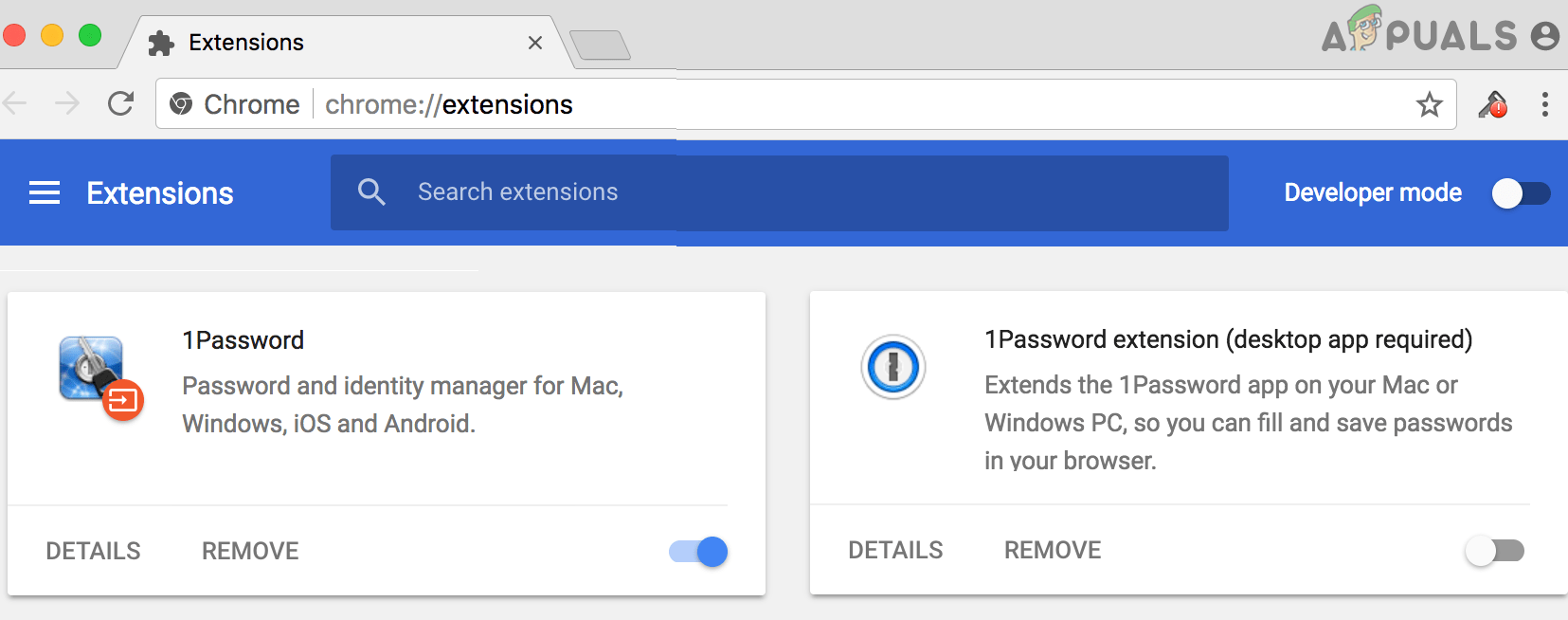
Disable One of the 1Password Extensions - Also, inspect your installed applications for duplicate 1Password versions (one from your OS Store and another from the 1Password website). Remove redundant versions and test again.
5. Reinstall the 1Password Extension
Corrupted or incomplete extension installations can prevent 1Password from functioning. Reinstalling the extension can repair such corruption and restore normal operation.
- Back up your important website login data stored in 1Password.
- In Chrome, go to the Extensions area.
- Click Manage Extensions and select Remove beneath the 1Password extension.
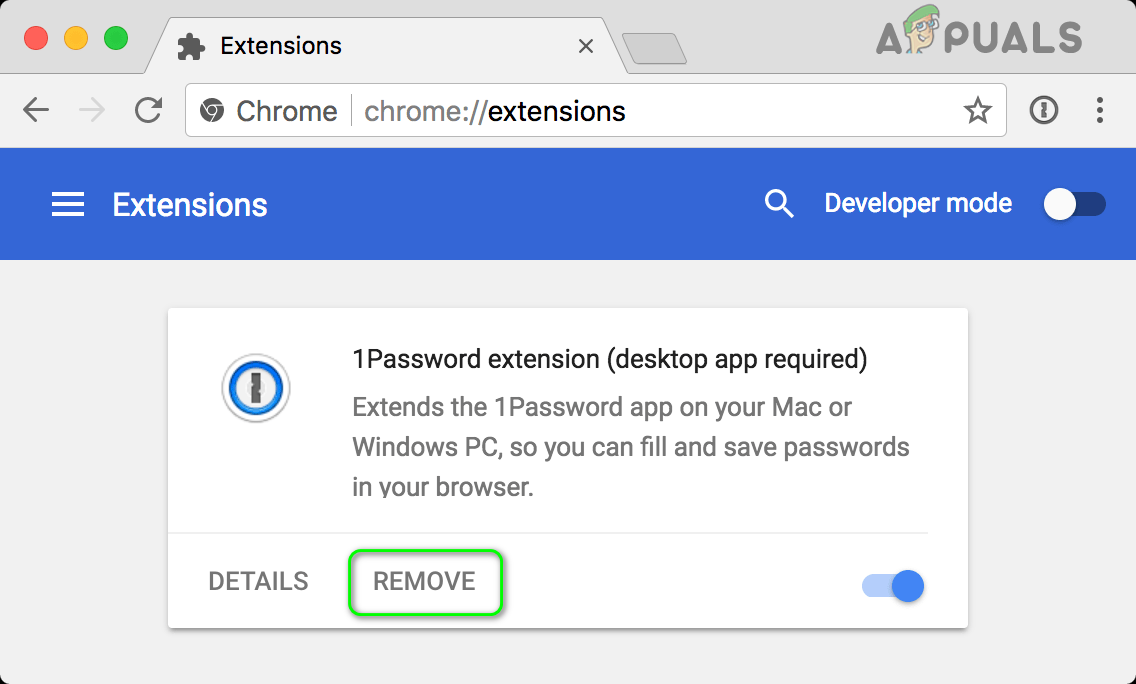
Remove the 1Password Extension - Confirm the removal and restart Chrome.
- After restarting, reinstall the 1Password extension and verify if it works correctly.
- If issues persist, repeat steps 1-4, restart your system, and try again.
- Open the 1Password application before opening Chrome, then reinstall the extension and re-test.
6. Enable the 1Password Extension Helper
The 1Password extension relies on the extension helper to synchronize properly. If disabled, synchronization may break. Activating this helper ensures optimal integration, especially on macOS.
- Open your Mac’s Preferences, then navigate to the Browsers tab.
- Check the box for Always Keep 1Password Extension Helper Running.
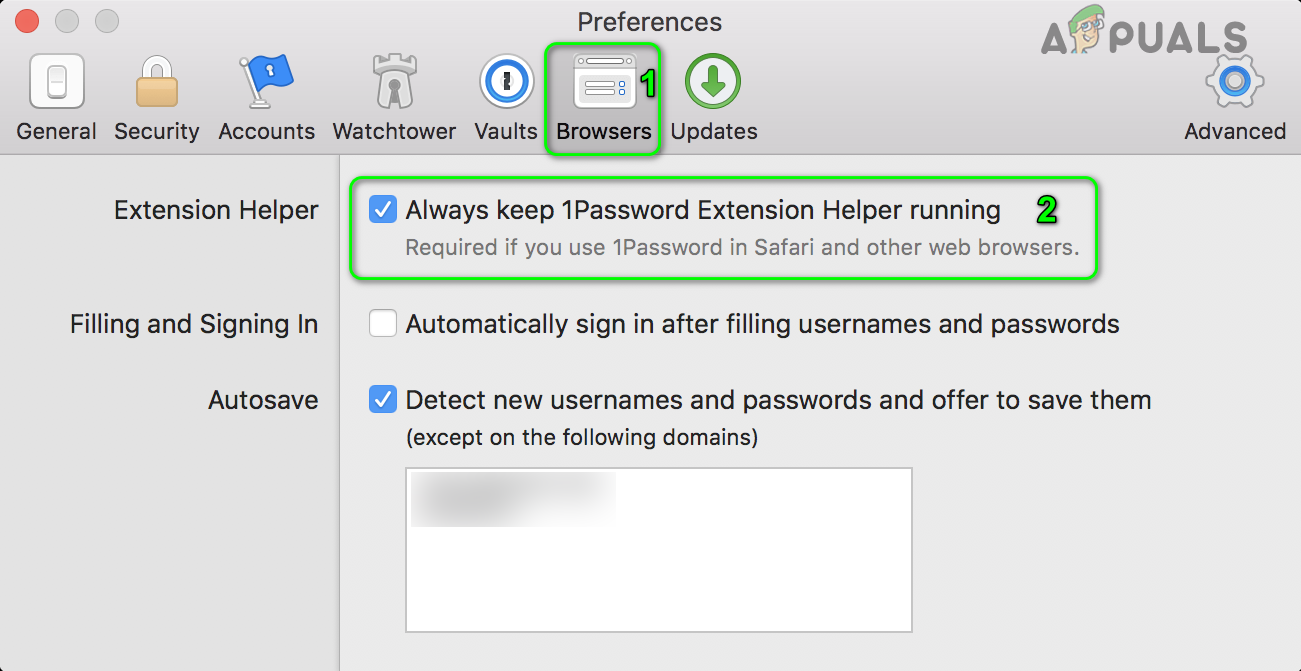
Enable Always Keep 1Password Extension Helper Running - Test if the 1Password extension now works correctly.
- If it was already enabled, disable it, restart your Mac, then re-enable the helper and re-check.
7. Re-Run the 1Password Application Setup
The 1Password companion app must be properly configured for the Chrome extension to function, especially for non-cloud versions. Incorrect registry entries can block integration. Running the setup process again helps fix these issues on Windows.
- Exit both Chrome and the 1Password application. Ensure no related processes are running in the Task Manager.
- Open the Run dialog (press Windows + R), then execute:
1Password.exe --setup
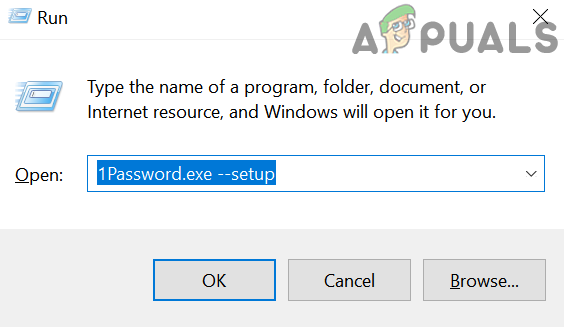
Rerun the 1Password Application Setup - If prompted, enter your 1Password master password.
- When you see confirmation that 1Password is updated, launch Chrome while leaving the application running and check the extension.
- If issues persist, uninstall the 1Password extension as in previous steps and restart your system.
- Repeat steps 1-4, then reinstall the extension and check again.
- If the problem remains, download the latest 1Password application.
- After exiting Chrome and stopping all 1Password processes, install the new version (run as administrator) and test its function.
8. Reinstall the 1Password Application
Moving the installation folder or file corruption can break the companion app, causing the extension to fail. Reinstalling ensures you have clean, intact files. Mac users can try the 1Password Troubleshooting Utility first.
- Back up your login credentials and confirm no Chrome or 1Password processes are running.
- Uninstall the 1Password extension as covered above.
- Right-click the Start button and select Apps & Features.
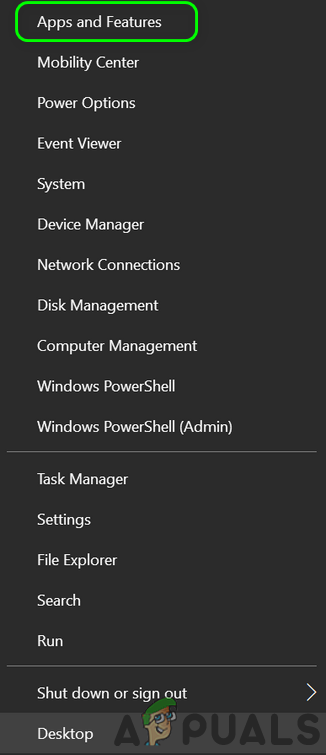
Open Apps & Features - Find 1Password, expand its menu, and click Uninstall.
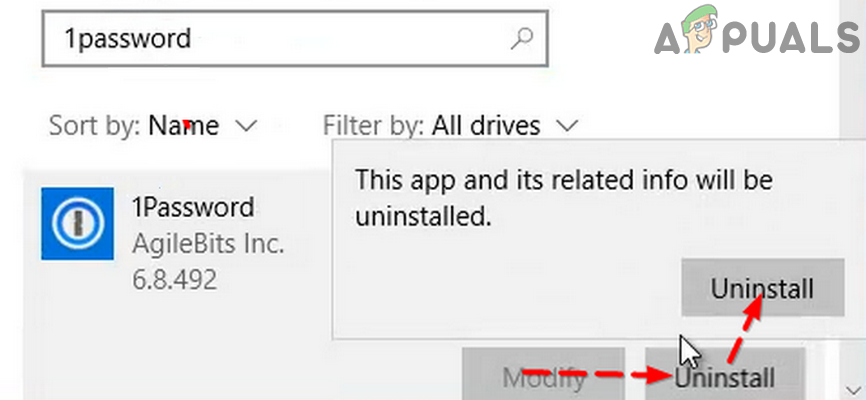
Uninstall the 1Password Application - Confirm the uninstallation and restart your system.
- After reboot, reinstall 1Password and its extension. Retest functionality.
9. Disable ‘Verify Web Browser Code Signature’ in the 1Password Application Settings
Older versions of 1Password (e.g., version 4) may encounter compatibility problems with modern browsers. Disabling verification of the web browser code signature can sometimes help, though it does introduce a security risk.
Warning: Disabling this check may expose your system and data to attacks. Proceed only if necessary and understand the risks.
- Launch the 1Password application and open its Help menu.
- Hover over Advanced and uncheck Verify Web Browser Code Signature.
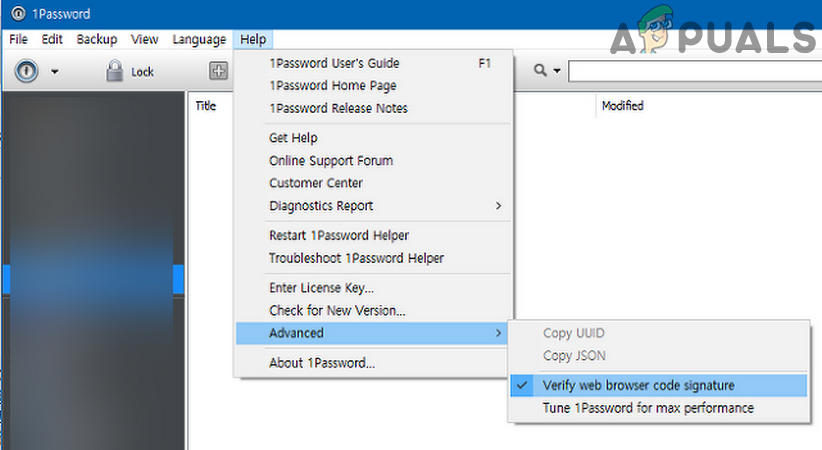
Disable the Option of Verify Web Browser Code Signature - Restart your computer and check if this has resolved the extension problem.
10. Remove All Extensions from Chrome
Other browser extensions can interfere with 1Password’s operation. Removing all extensions eliminates conflicts and helps identify the problematic one.
- Back up your important data. Open Chrome and click the Extensions icon beside the address bar.
- Remove every extension by clicking each Remove button.
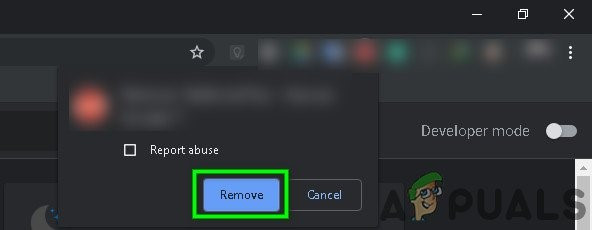
Confirm to Remove the Extension - Shut down your computer and wait one minute.
- Restart the system, then open Chrome.
- Add the 1Password extension and verify its function.
- If issues persist, remove the extension again and power off your computer.
- Wait another minute, restart the system, launch the 1Password application, then open Chrome and reinstall the extension.
11. Reinstall the Chrome Browser
A corrupt Chrome installation can prevent extensions from working correctly, even if other troubleshooting measures fail. Reinstalling Chrome will refresh its files and settings, resolving persistent issues.
- Back up all essential browser data and extension data.
- Uninstall the 1Password Chrome extension.
- Exit Chrome and the 1Password application, ensuring no related processes remain in the Task Manager.
- Uninstall the 1Password application, as described earlier.
- Right-click the Windows button and select Apps & Features.
- Expand the Chrome section and click Uninstall.
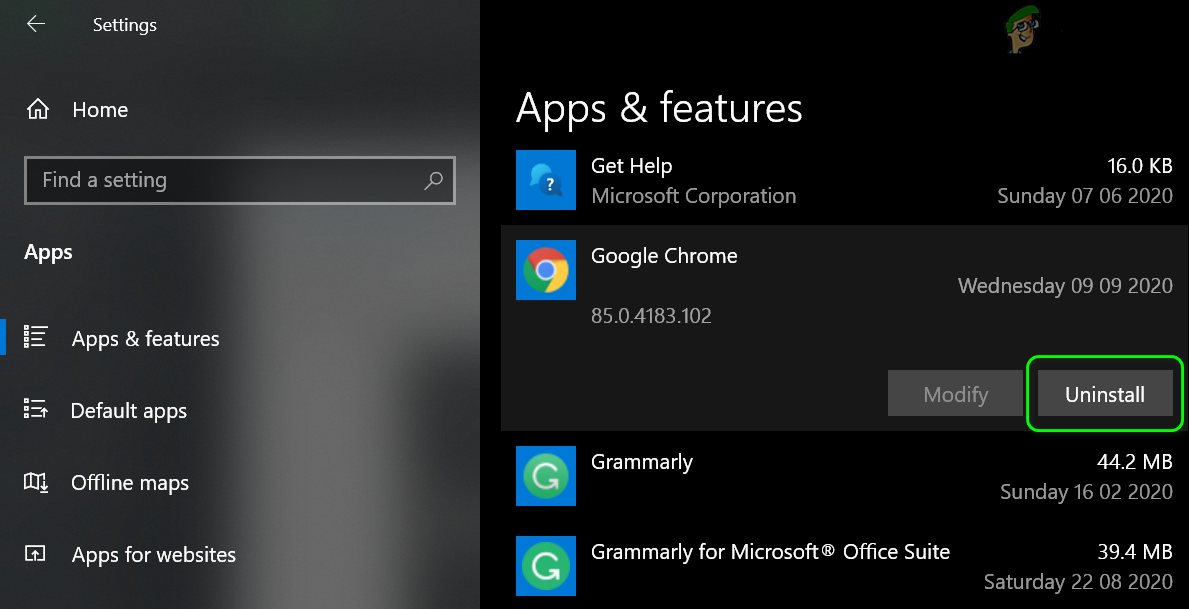
Uninstall Chrome in the System Settings - Select Also Delete Your Browsing Data before clicking Uninstall.
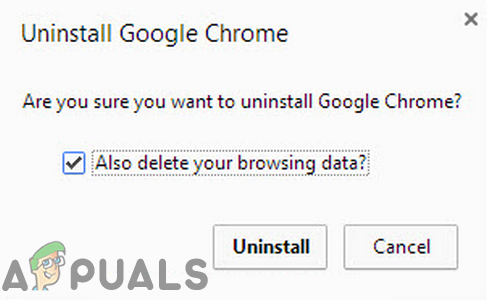
Check the Option of Also Delete Your Browsing Data - Follow the on-screen prompts to complete the uninstallation.
- Restart your system. After your PC reboots, open File Explorer.
- Navigate to the following path:
%localappdata%
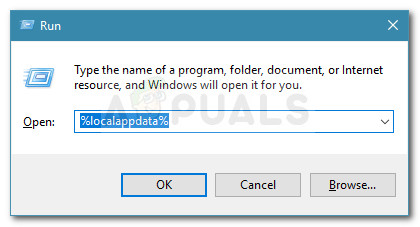
Run dialog box: %localappdata% - In the Local folder, delete the 1Password and Google folders.
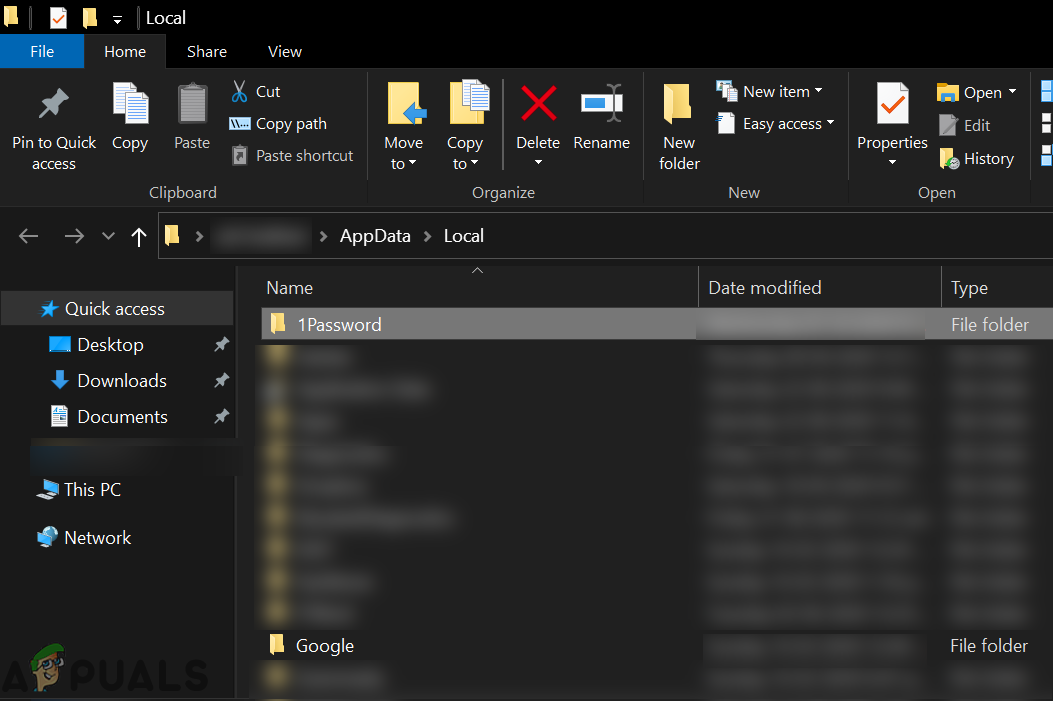
Delete the 1Password and Google Folder - Restart your computer again, then reinstall Chrome and the 1Password application.
- Reinstall the 1Password extension and check if the issue has been resolved.
If the problem continues, try reverting to an older version of the 1Password application. On a Mac, move both Chrome and the 1Password app to the System Applications folder. Additionally, try logging out of the Mac App Store and iTunes Store, restarting your device, and then logging back in. This can resolve credential-related problems.
As an additional step, make sure the option Never Display in Browser is unchecked in the 1Password application settings. If none of these solutions work, consider switching to the 1Password X extension (after uninstalling the current 1Password application and extension).





